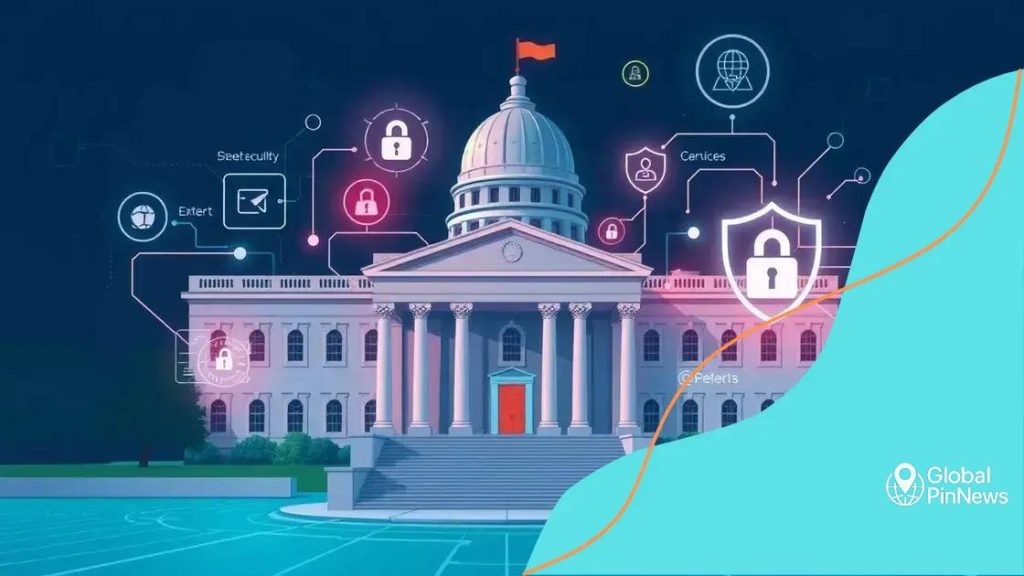Cybersecurity threats and government responses in 2023

Cybersecurity threats are evolving rapidly, prompting governments to enhance regulations, foster public-private collaboration, and develop comprehensive policies to protect sensitive information and infrastructure.
Cybersecurity threats and government responses are critical topics today, as the digital landscape continues to change. Have you considered how robust security measures affect your daily life? Let’s dive into essential insights.
Understanding the landscape of cybersecurity threats
Understanding the landscape of cybersecurity threats is essential for both individuals and organizations. As technology evolves, so do the strategies used by malicious actors. Cyber threats not only affect large corporations but also target everyday users.
Types of Cybersecurity Threats
There are several major types of cybersecurity threats today, each posing unique risks. Recognizing these threats is the first step in defending against them. Here are some examples:
- Malware: This includes viruses, worms, and spyware designed to harm or exploit devices.
- Phishing: This scheme tricks individuals into revealing sensitive information using fake emails or websites.
- Ransomware: A type of malware that locks files and demands payment for their release.
- Denial-of-Service attacks: These overwhelm systems with traffic, causing service disruptions.
Moreover, cybersecurity threats can also stem from insider breaches, where employees may unintentionally expose sensitive information. Regular training and awareness programs are key to mitigating this risk.
Emerging Threats
As technology advances, new threats continue to develop. For example, the rise of the Internet of Things (IoT) has introduced vulnerabilities, as more devices connect to the internet. Hackers can exploit these devices to gain unauthorized access.
Additionally, with the rapid shift toward remote work, phishing attempts have increased significantly. Employees working from home may fall prey to deceptive tactics that bypass office security systems. Therefore, understanding these evolving threats is crucial for adapting defenses.
Governments and organizations must collaborate to ensure robust cybersecurity measures are in place. Establishing clear guidelines and encouraging information sharing can play a vital role in defense strategies. Keeping systems up to date with the latest security patches is also essential in minimizing risk.
Major types of cybersecurity threats today
Today, understanding the major types of cybersecurity threats is crucial for anyone using technology. Cyber threats can compromise data and privacy, making awareness important.
Common Cybersecurity Threats
There are several prevalent threats that individuals and businesses face daily. It’s essential to recognize these to stay protected. Here are some key types:
- Malware: This broad term refers to any malicious software, including viruses, worms, and ransomware that disrupts systems.
- Phishing: Phishing attacks trick users into revealing confidential information through deceptive emails and websites.
- Ransomware: A severe form of malware that encrypts files, demanding payment for access recovery.
- Social Engineering: This tactic manipulates people into breaking security protocols, often by exploiting trust.
Phishing, in particular, is increasing in commonality as cybercriminals refine their techniques. They create convincing messages that appear legitimate, luring victims to click on malicious links. With the growing sophistication of these attacks, awareness is the first line of defense.
Emerging Threats
Another area of concern involves emerging threats driven by technology changes. The rise of Internet of Things (IoT) devices, for instance, has expanded attack surfaces. Weak security on these devices can provide unauthorized access for hackers.
Furthermore, as remote work continues to be prevalent, organizations must be proactive in addressing new vulnerabilities. Without proper security measures, remote workers may inadvertently expose sensitive company information.
Overall, understanding these major threats allows individuals and organizations to implement better defenses. Regularly updating security protocols and educating users are key strategies to combat these risks effectively.
Government responses to emerging cybersecurity threats

Government responses to emerging cybersecurity threats are vital for national security and public safety. As cyber threats evolve, so must the strategies used to combat them. Governments around the world are increasingly focusing on enhancing their cybersecurity measures.
Policy Development
One important step involves the development of comprehensive cybersecurity policies. These policies help create frameworks for protecting critical infrastructure and information systems. A robust policy considers:
- Risk assessment: Identifying vulnerabilities in systems and evaluating potential impacts.
- Incident response: Crafting plans for responding effectively to cyber incidents.
- Public awareness: Educating citizens about cybersecurity risks and safe practices.
- International cooperation: Collaborating with other nations to share intelligence and resources.
These components are essential for establishing a secure environment and fostering resilience against cyber attacks.
Investment in Technology
Another crucial response is investing in advanced cybersecurity technologies. Governments are allocating resources to develop tools that can detect and respond to threats quickly. Technologies such as artificial intelligence and machine learning play significant roles in identifying patterns of suspicious activity.
Moreover, governments are working to enhance partnerships with private sectors, leveraging their expertise and resources. This collaboration can improve overall defense capabilities against cyber threats.
Additionally, ongoing training and development programs for government personnel ensure that staff are well-equipped to handle cybersecurity challenges. It is essential for defenders to stay updated on the latest tactics used by cybercriminals.
How organizations can prepare for cybersecurity attacks
Organizations must take proactive steps to prepare for cybersecurity attacks. By implementing strong defenses and training staff, they can mitigate risks effectively. Every organization should establish a solid cybersecurity strategy to protect sensitive data.
Creating a Cybersecurity Plan
A comprehensive cybersecurity plan serves as a roadmap for addressing potential threats. This plan should include:
- Risk assessments: Regularly identify and evaluate vulnerabilities in systems.
- Access controls: Limit access to sensitive information, ensuring only authorized personnel can view critical data.
- Incident response plans: Develop strategies for responding to cyber attacks quickly and efficiently.
By outlining these elements, organizations can better defend against the evolving landscape of cyber threats.
Employee Training and Awareness
Another vital component is training employees on cybersecurity best practices. Employees are often the first line of defense against attacks. Regular training helps them recognize potential threats such as phishing emails and suspicious links.
Moreover, fostering a culture of security awareness ensures that cybersecurity remains a priority. Organizations should encourage open communication about security issues and create an environment where employees feel comfortable reporting concerns.
In addition, simulating cyber attack scenarios can provide practical experience. These exercises help employees practice their response and identify areas for improvement within the organization.
Finally, keeping software and systems updated is critical in defending against cyber threats. Regular updates patch vulnerabilities and enhance overall security. Organizations that prioritize these practices will be better equipped to handle any cyber attack that comes their way.
Future trends in cybersecurity and government policy
The future trends in cybersecurity and government policy are shaping how society addresses threats. With technology evolving rapidly, governments must be proactive and adapt to new challenges.
Increased Regulation
One trend is the possibility of increased regulation around cybersecurity practices. Governments are likely to introduce stricter rules to protect sensitive information. These regulations may include:
- Data protection laws: Mandating how organizations manage and store personal data.
- Incident reporting requirements: Requiring companies to report breaches swiftly to authorities.
- Cybersecurity certifications: Establishing standards that businesses must meet to demonstrate compliance.
By enforcing these practices, governments aim to strengthen overall security and reduce vulnerabilities.
Collaboration and Information Sharing
Another emerging trend is collaboration between governments and private sectors. This partnership is crucial for addressing cybersecurity threats effectively. Information sharing can help organizations remain informed about the latest threats and vulnerabilities.
Governments may establish platforms for sharing intelligence on cyber attacks. These platforms will allow companies to stay ahead of attackers by pooling resources and expertise. As businesses collaborate, they can develop more effective defense strategies against cyber threats.
Furthermore, governments are likely to invest more in cybersecurity research and development. Innovations in technology will bring advanced tools that help detect and respond to cyber attacks in real time.
As the digital landscape continues to evolve, organizations must remain adaptable and vigilant. Staying updated on government policies and participating in broader cybersecurity initiatives will be essential for success.
FAQ – Frequently Asked Questions about Cybersecurity Threats and Government Responses
What are the most common types of cybersecurity threats?
The most common types of cybersecurity threats include malware, phishing, ransomware, and social engineering attacks.
How can organizations prepare for cybersecurity attacks?
Organizations can prepare by developing a comprehensive cybersecurity plan, conducting regular risk assessments, and training employees on best practices.
What role does the government play in cybersecurity?
The government develops regulations, promotes collaboration between sectors, and invests in cybersecurity initiatives to help protect citizens and infrastructure.
Why is employee training important in cybersecurity?
Employee training is crucial because staff are often the first line of defense. Training helps them recognize potential threats and respond effectively.
